johnstown

On May 31st, 1889, disaster struck the City of Johnstown, Pennsylvania when a catastrophic flood took the lives of 2,208 people. Unprecedented rainfall the days before compromised an inadequate dam and flooded the city downstream, causing total destruction of Cambria county’s largest city.
In fourth grade we learned about Pennsylvania, our home state. We learned all about the good and the bad. For the good, we listened to actors in Benjamin Franklin costumes talk about the founding of America in Philadelphia and made Auntie Anne’s pretzels. For the bad, we read the book The Terrible Wave by Marden Dahlstedt. A vivid and terrifying account of a young girls experience of the flood. Looking back, this could very well be what sparked my interest in disasters. I felt a compelling force in the direction of Johnstown ever since.
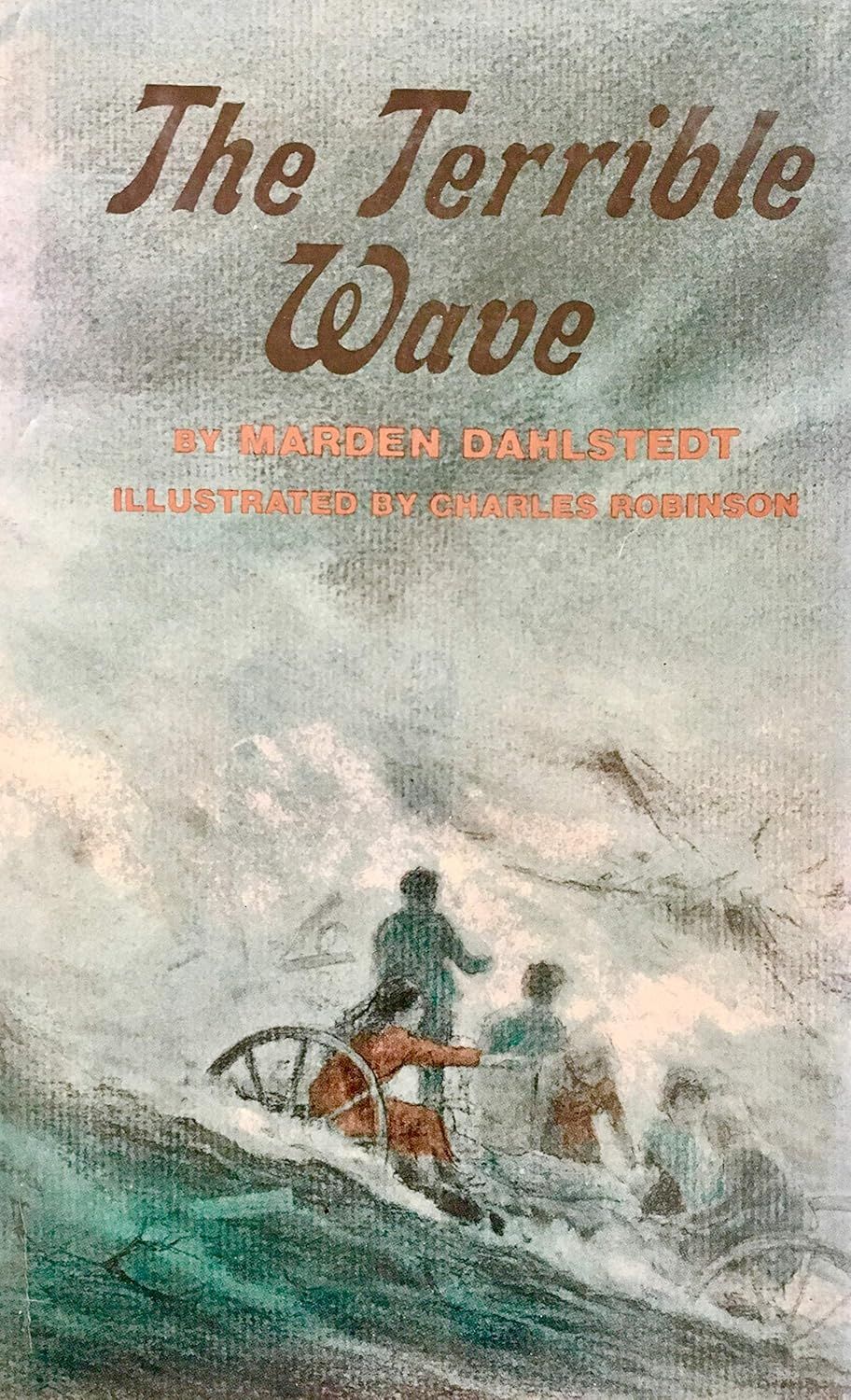 The Terrible Wave by Marden Dahlstedt
The Terrible Wave by Marden Dahlstedt
When thinking of places to visit in Pennsylvania for this project I’ve come to call Keystone Dreams, Johnstown was by far one of the first obvious ones. After our first day at Fallingwater and Pittsburgh, we saw in both places different ways humans had carved the environment to suit their needs. At Fallingwater it was a single architect’s vision about how a wealthy family’s home could exist in harmony with the natural stream it was built on top of. In Pittsburgh we saw how the working class—in order to fill the pockets of wealthy coal companies and fuel America—had settled in the valley around the confluence of the Allegheny, Monongahela, and Ohio Rivers. Where laborers broke ground and mined the Earth for the resources we then polluted it and ourselves with. Johnstown was about to show us another side of nature: how ruthless it can be in its indiscriminate destruction, especially to those innocent of the cause.
Amanda and I drove into Johnstown from above where we passed a small landing with a stone arch overlooking the city from above. We stop to look at the view but it’s obscured by trees, while we have little knowledge of the path of the flood yet, we still try to imagine what it would have looked like. A large bronze or iron sign adorns the Flood Museum above the main entrance, letting other disaster tourists know that it was originally the:
“Johnstown Public Library Erected by the Cambria Iron co 1879, Destroyed by the Flood of May 31st, 1889, Rebuilded Enlarged & Improved by Andrew Carnegie 1891”
A man whom we will soon learn is somewhat partially responsible for the flood.
 Flood Museum Entrance Sign
Flood Museum Entrance Sign
We just missed the start of the tour, so we explored the museum ourselves and subsequently missed the in-house film. The museum itself was quite dated, there are renovation plans for the future to update the diorama and side exhibits on the main floor, the museums main attraction. Although I find it still retains a certain vintage charm. The third floor of the museum has a small section of old pop culture memorabilia of the flood in a room otherwise dedicated to an organ piano, and the second floor where the theater is has a number of transparent photographs from the 70s illuminated from behind by fluorescent lighting that depicts everyday white and blue collar scenes, a thriving community reconstruction after the 20th century flood in 1977. Very different from the town today, yet still almost exactly the same.

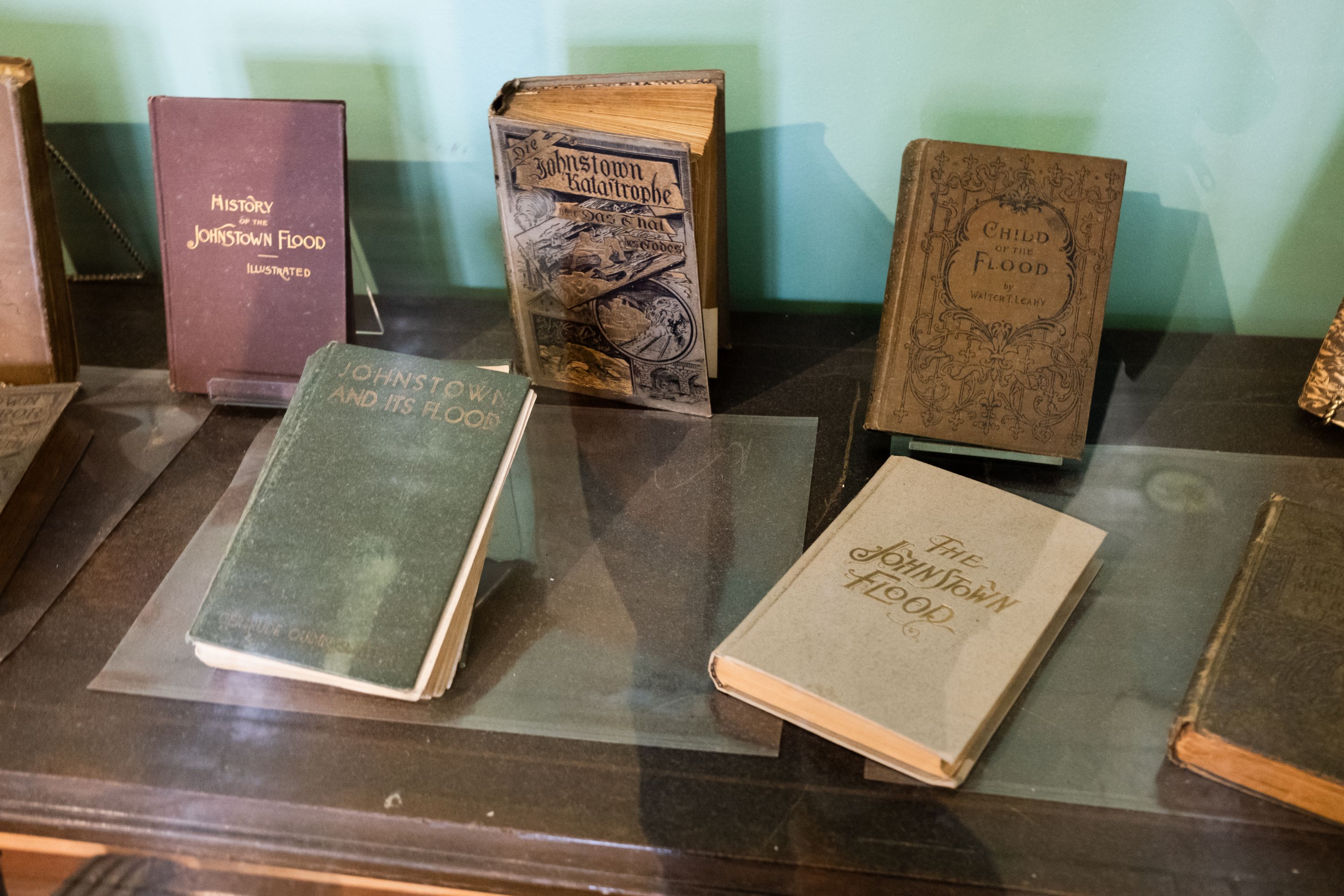
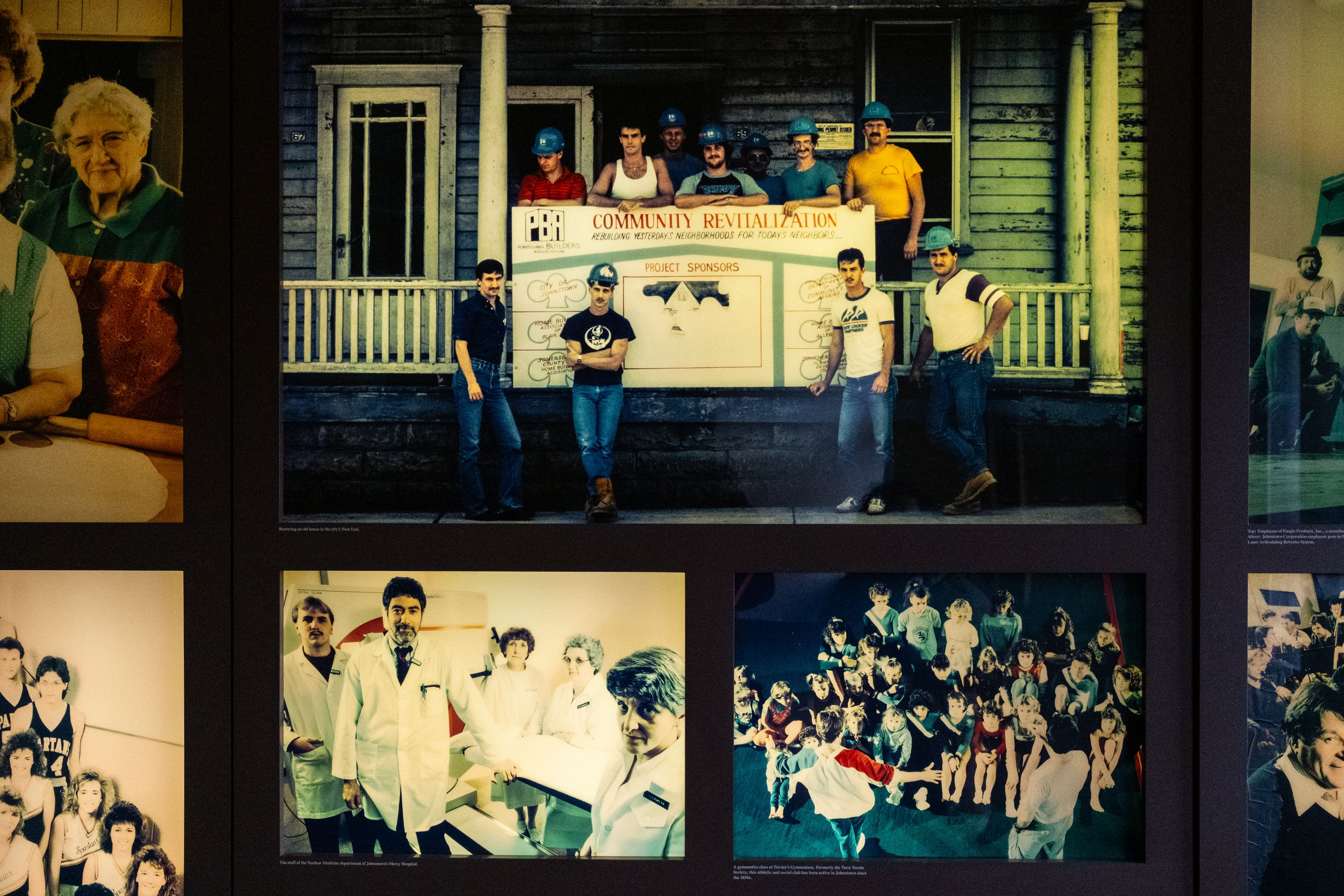 1970’s Community Revitalization Project
1970’s Community Revitalization Project
The ground floor and the diorama are surrounded by old 80s or 90s looking cathode ray tube televisions showing dated digital 2D recreations of the flood, and display cases containing fascinating bits of flood history. A telegraph used by a woman who alerted Johnstown about the impending doom who declared she would not abandon her post gives me a bit of pause. This isn’t just a story I read in Elementary school, there were real people here, doing what they had to do to protect their community. A full bottle of murky black flood water collected during the clean up sits on display. There was also a straight blade razor, inscribed with details on its recovery by an Altoona resident; many of whom came to help assist with the cleanup. A record book inscribed with beautiful 1800s penmanship, describing and identifying found corpses and body parts. A disturbing contrast.
 2D Digital Reconstruction
2D Digital Reconstruction 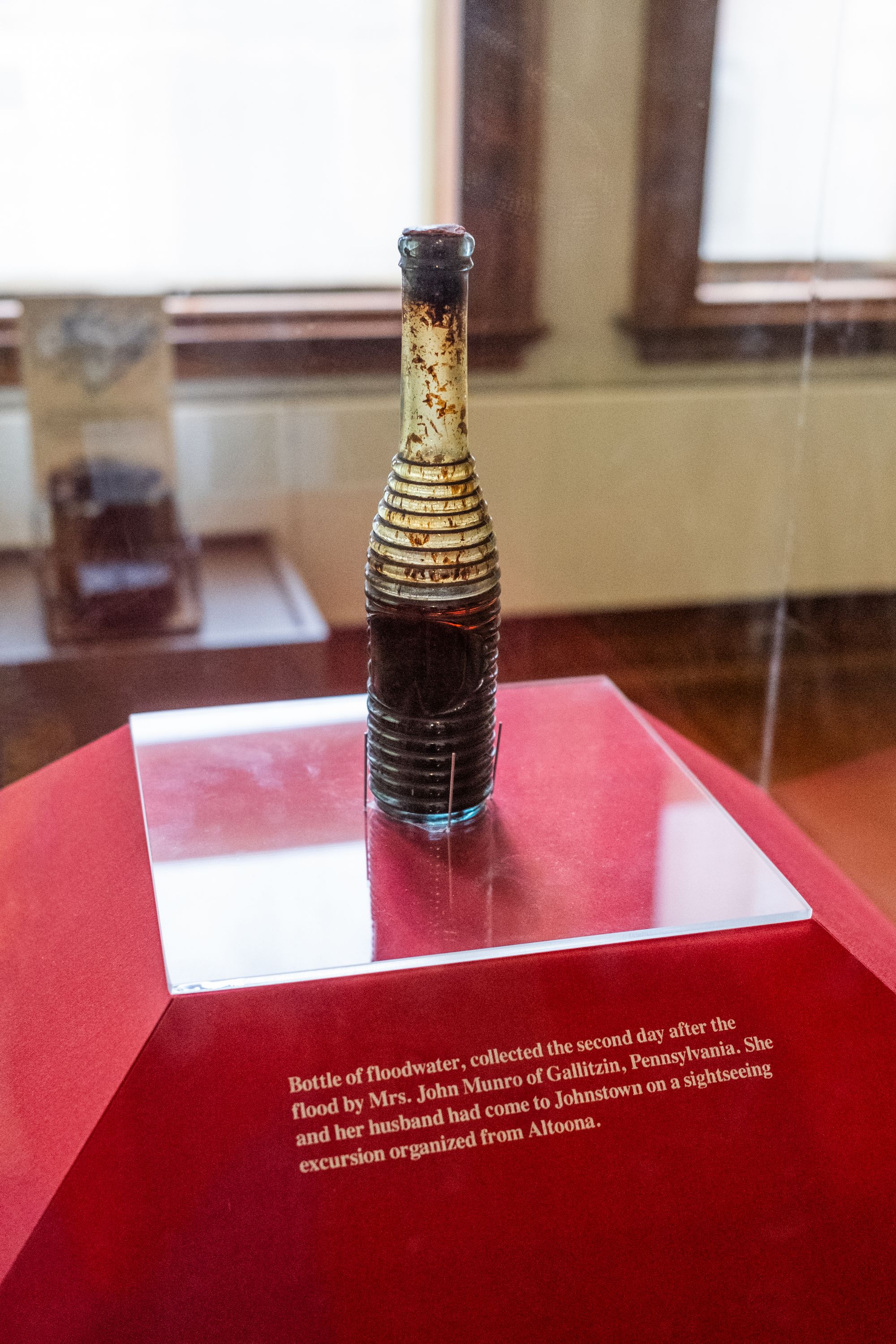 Bottled flood water
Bottled flood water 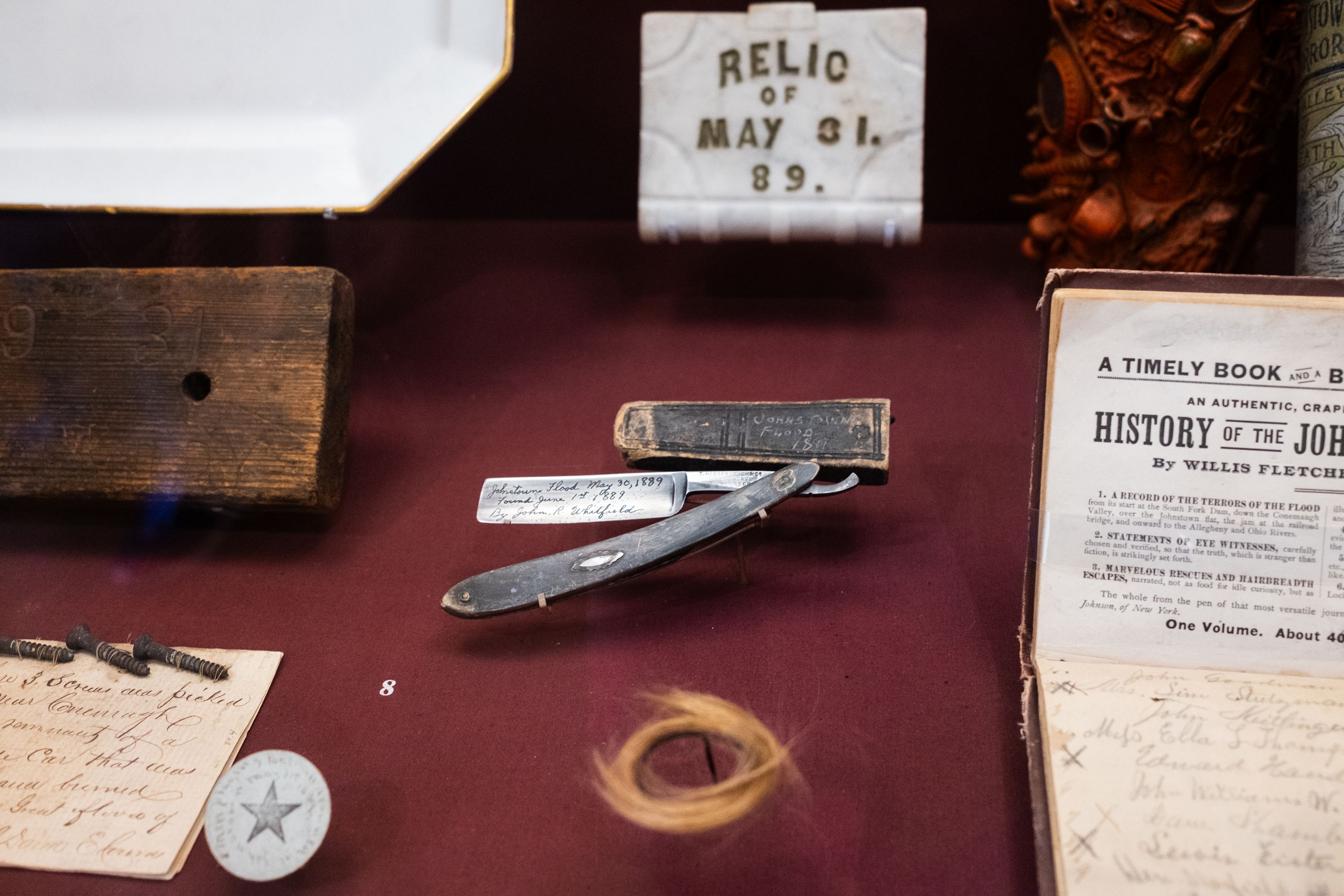 Straight razor inscribed by Altoona resident
Straight razor inscribed by Altoona resident
The informational panels were not shy about condemning the alterations and neglect that likely caused the failure of South Fork Dam. The museum placed blame squarely on The South Fork Fishing and Hunting Club whose members included many of the rail and steel tycoons of 19th century America such as Andrew Carnegie and Henry Clay Frick, among others. Unprecedented rainfall preceded the dam failure and the resulting flood led to the deaths of exactly 2,208 people. Telegraphs from South Fork to Johnstown either went unheeded, or were never sent until it was too late. Attempts were made to unclog spillways and dig ditches away from the center of the dam to prevent it cresting. This futile effort took place over a matter of hours and went on until the men were ordered to get to high ground at about 1:30 PM. The dam breached about an hour and a half later between 2:50 and 2:55. Once it broke, it took 57 minutes to hit Johnstown. The 60 foot wave moved through the valley at 40 miles per hour and destroyed Johnstown before hitting the mountain wall and smashed through the town again, taking the debris and people it collected to the stonebridge on the edge of the town where it acted as a filter, leaving behind 30 acres of debris and the corpses of those who perished. I cannot comprehend the utter destruction it must have been, and how tragic and gruesome the resulting three month cleanup was. I’ve spared some of the more gruesome details I’ve read about the cleanup from this blog post, it’s not pretty. The South Fork Fishing and Hunting Club was never held liable for the catastrophic disaster and loss of life.
 Flood path Diorama
Flood path Diorama  Flood path diorama showing submerged area and fire at the stonebridge
Flood path diorama showing submerged area and fire at the stonebridge
When we caught up with the tour, the docent was guiding the group through the diorama. He points out a house upon a hill, opposite the wall the water slammed into that was spared from the path of the flood. The 6 year old girl who lived there would become his grandmother. The thread that led to his existence is a fine one, and you can tell he knows this. The back wall is plastered with wood and debris painted white, representing the pile of detritus left in the floods aftermath as the water filtered through the stonebridge down the Conemaugh River. We exit through the giftshop and contemplate buying David McCullough’s The Johnstown Flood but decide not to even though I should have. We take a walk to the stonebridge before backtracking through the small city for lunch downtown on Main Street.
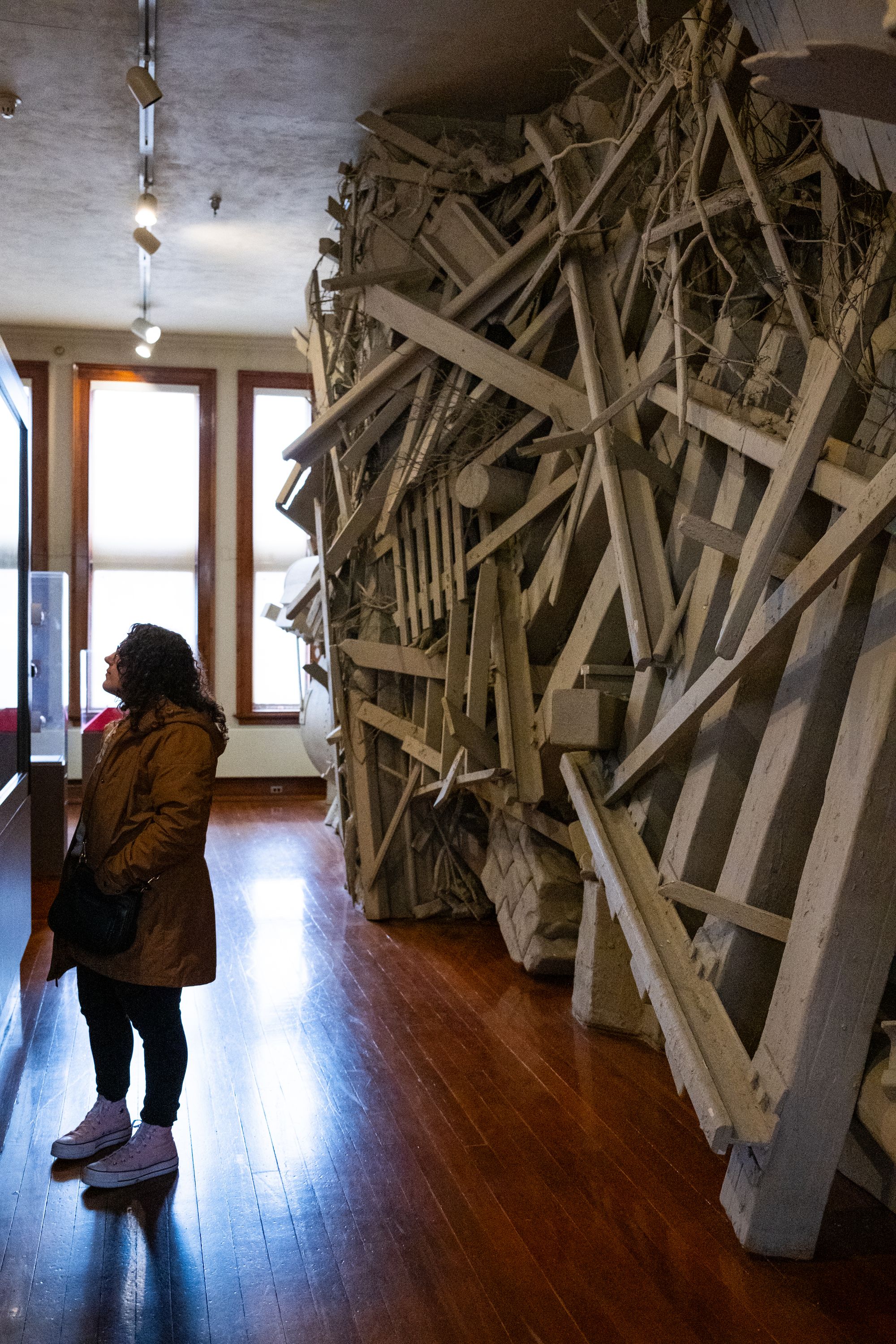 Amanda and wall of debris
Amanda and wall of debris 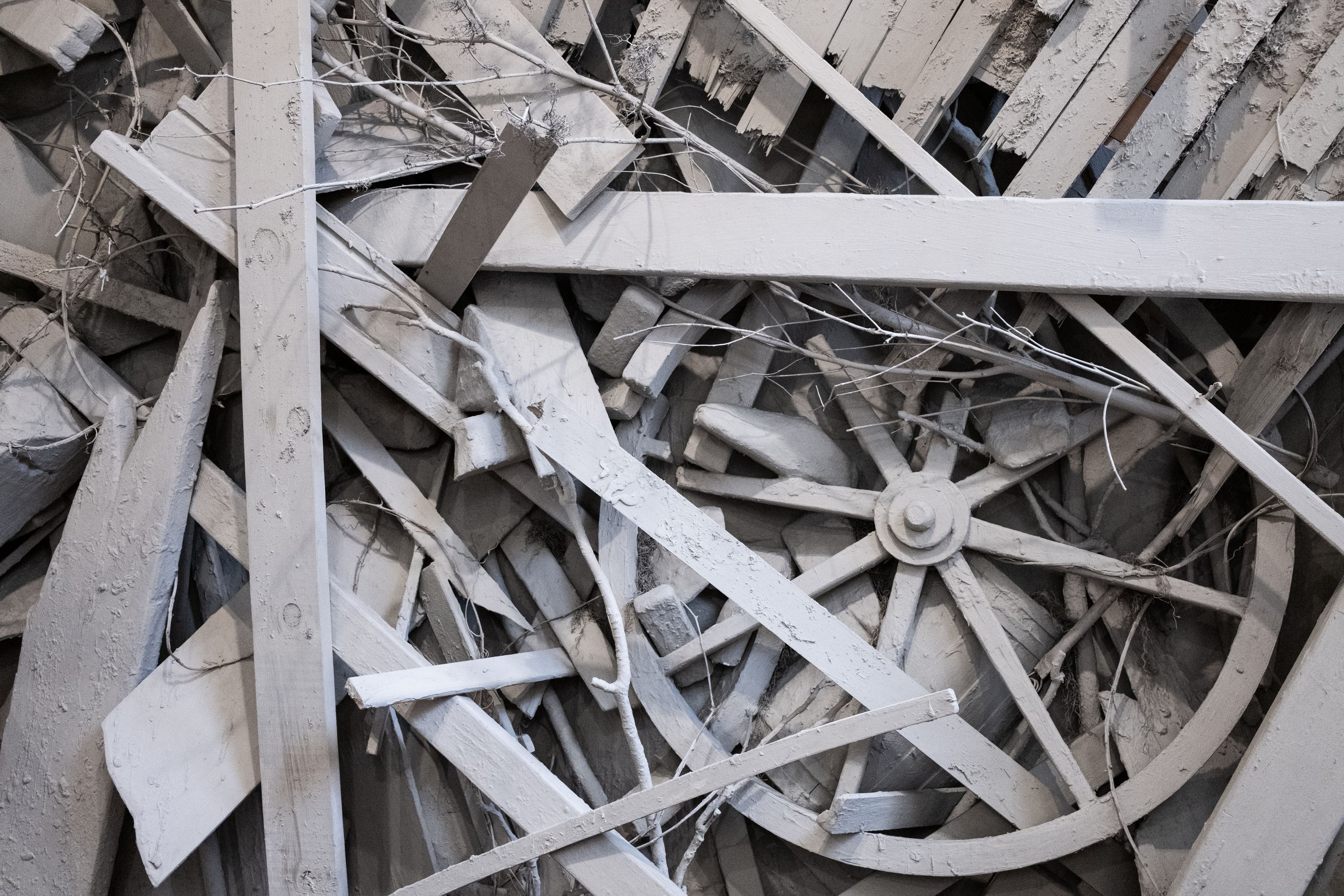
The sky is overcast, a foreshadow of what will end up being our disappointing view of the solar eclipse. The dreary weather adds to the palpable generational trauma of the city. You can feel it. We walk past a little league baseball game in a recently built, modestly-sized stadium as we reach the stonebridge. The baseball game is the only thing happening here in the city right now. Pointing towards the bridge is a small commemorative memorial park dedicated to the victims of the flood. I notice the reconstruction efforts the museum mentioned; the walls of the river shaped by concrete to better funnel any future flood water. Recent floods that have affected residents like myself in Eastern Pennsylvania have spared Johnstown, let’s hope it stays that way.
 The Stonebridge where debris was gathered
The Stonebridge where debris was gathered
Rivers are the backbone of human civilization. Egypt and the Nile. South America and the Amazon. Mesopotamia between the Tigris and the Euphrates. The story is the same for Pennsylvania. Native cultures settled around the Schuylkill and Susquehanna for millennia before America was colonized. Once colonized, Philadelphia was settled at the confluence of the Schuylkill and the Delaware River. To the west is the Susquehanna River, connecting Harrisburg to the north and south of the state allowing industry to flourish all over Pennsylvania. Pittsburgh is the confluence of the Allegheny, Monongahela, and Ohio Rivers. Little needs said about the Steel Town’s influence on Pennsylvania.
It feels cliché to say that Nature gives and Nature takes. I’d rather paraphrase a quote I heard somewhere: “Mountains don’t know how beautiful they are.” And I feel that way about Nature’s ugliness too. Too often we think of Nature as an entity that we ascribe human traits to, when it is simply a part of this nearly invisible system that’s ambivalent towards our own human existence. Places and disasters like this should remind us that if we don’t learn to live in harmony with Nature, all of humanities path forward will remain uncertain.
We spend more time in Johnstown than we would have preferred, were running late to see Punxsutawney Phil, but we’re not too sad about it. As we make our way downtown to check out main street and grab lunch we walk past the library. As a recent born-again book-lover I take the time to appreciate the massive mural of classic books painted on the front of it. In a world where everything feels gray unless it’s a fast food chain or a phone app, it’s refreshing to see a hand painted mural of brightly colored books dominating the city center. The only other brightly colored building here is a Trulieve medical marijuana dispensary. It also feels like one of the newest buildings. Most others are adorned on the top with the year they were built, 1890. The year after the flood.
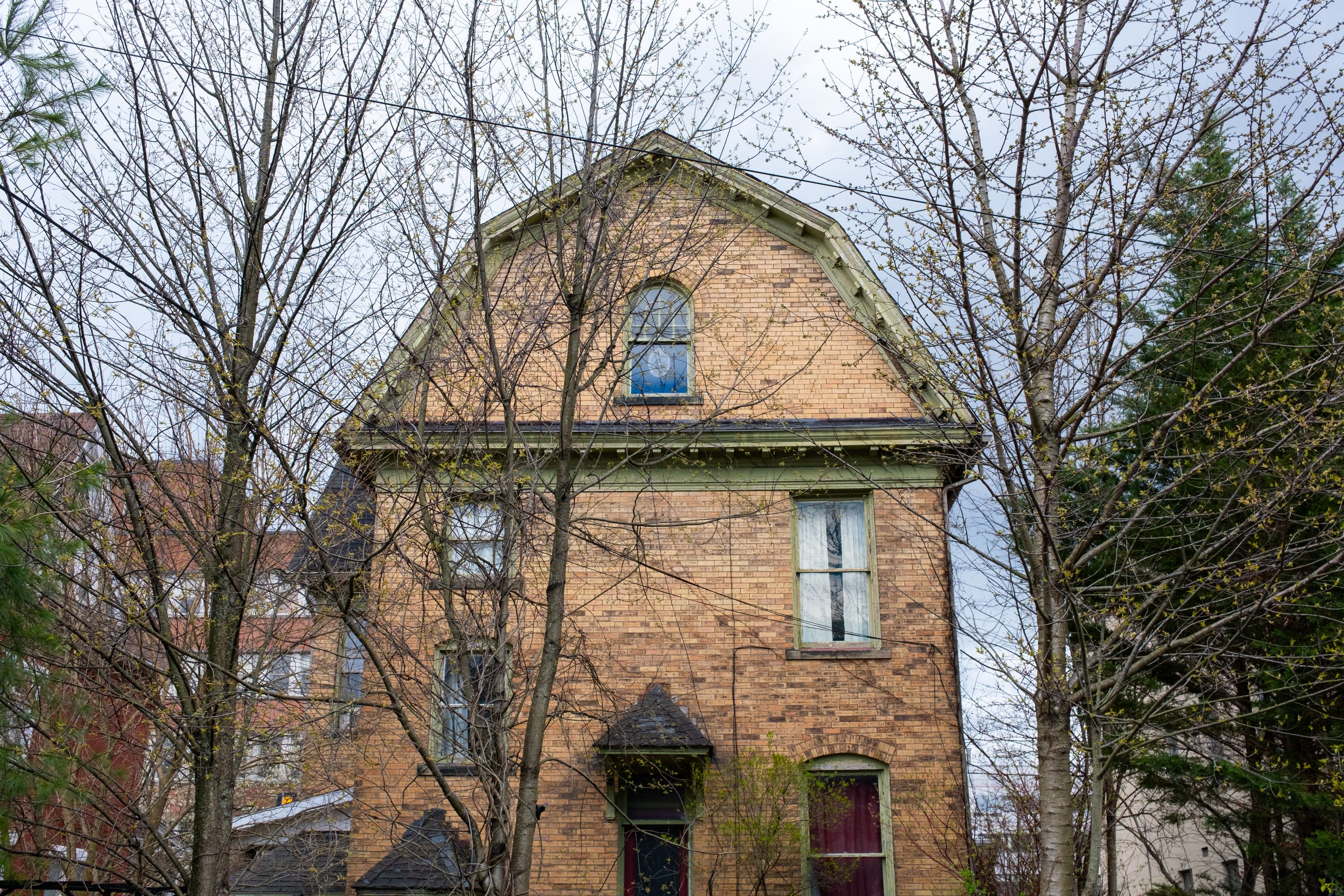 House in Johnstown
House in Johnstown  Johnstown Library Mural
Johnstown Library Mural 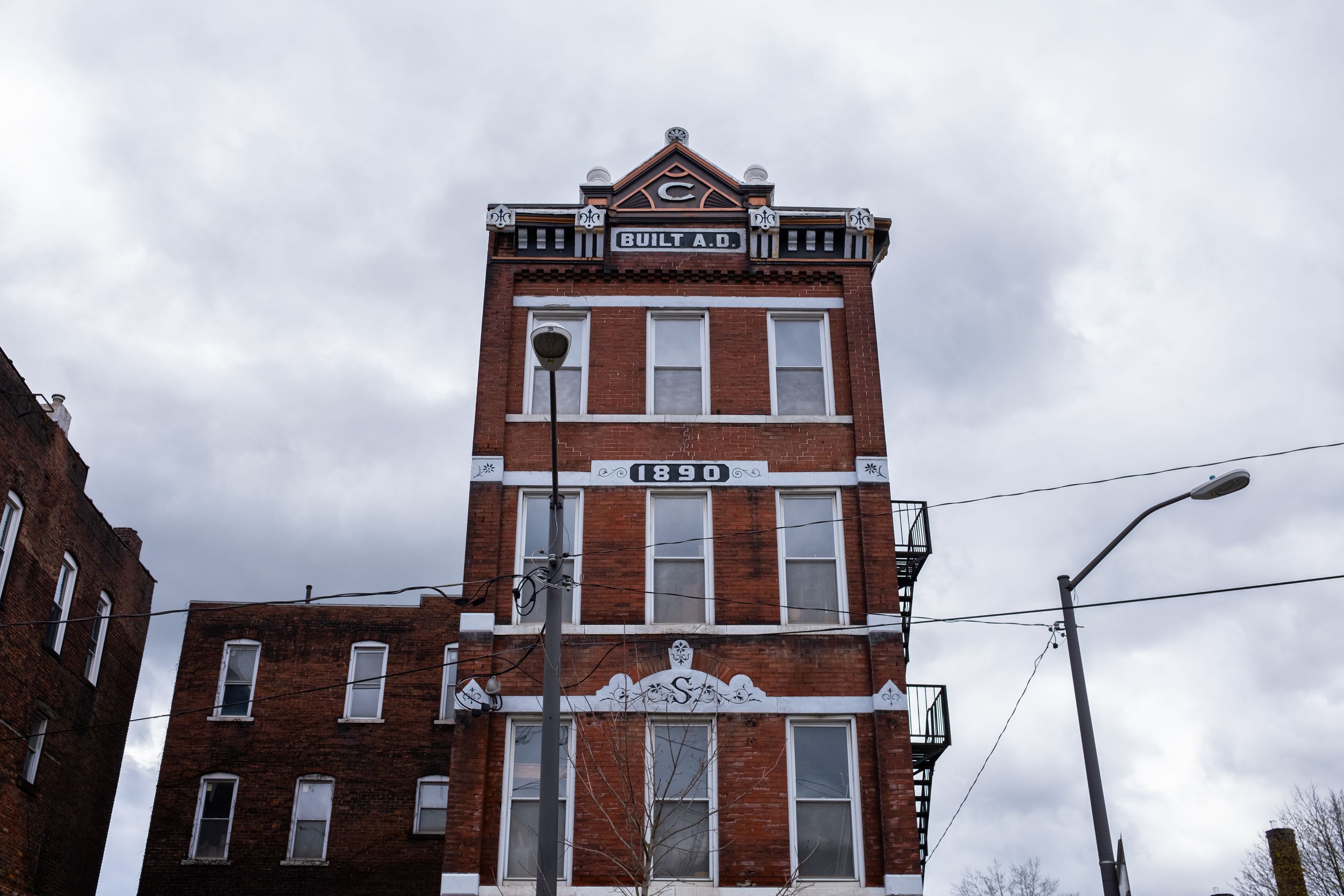 1890 building
1890 building
As we walk towards food we both marvel at a city taking ownership of their identity, while also pandering to disaster tourists like myself, I realize. Street signs for a Path of the Flood bike path, Stonebridge Brewing Company, Flood City Cafe. At first I felt conflicted about the use of such a tragic disaster in such a way and the fact that I’m drawn to it. I quickly adjust my thinking and realize it’s also theirs to use. Much like the museum docent, how many of these other Johnstown citizens have fine threads leading to their existence? We unfortunately didn’t stay long enough to talk to locals, although I would like to go back with my view camera. If the city feels it best to deal with their generational trauma in such a way, who am I to judge? When I think of taking pictures in a place like this I can’t help but think of Joel Sternfeld’s “On this Spot”. It’s one of those bodies of work about place and story that sparks intrigue about history and the places we walk past everyday.
 Flood City Cafe
Flood City Cafe 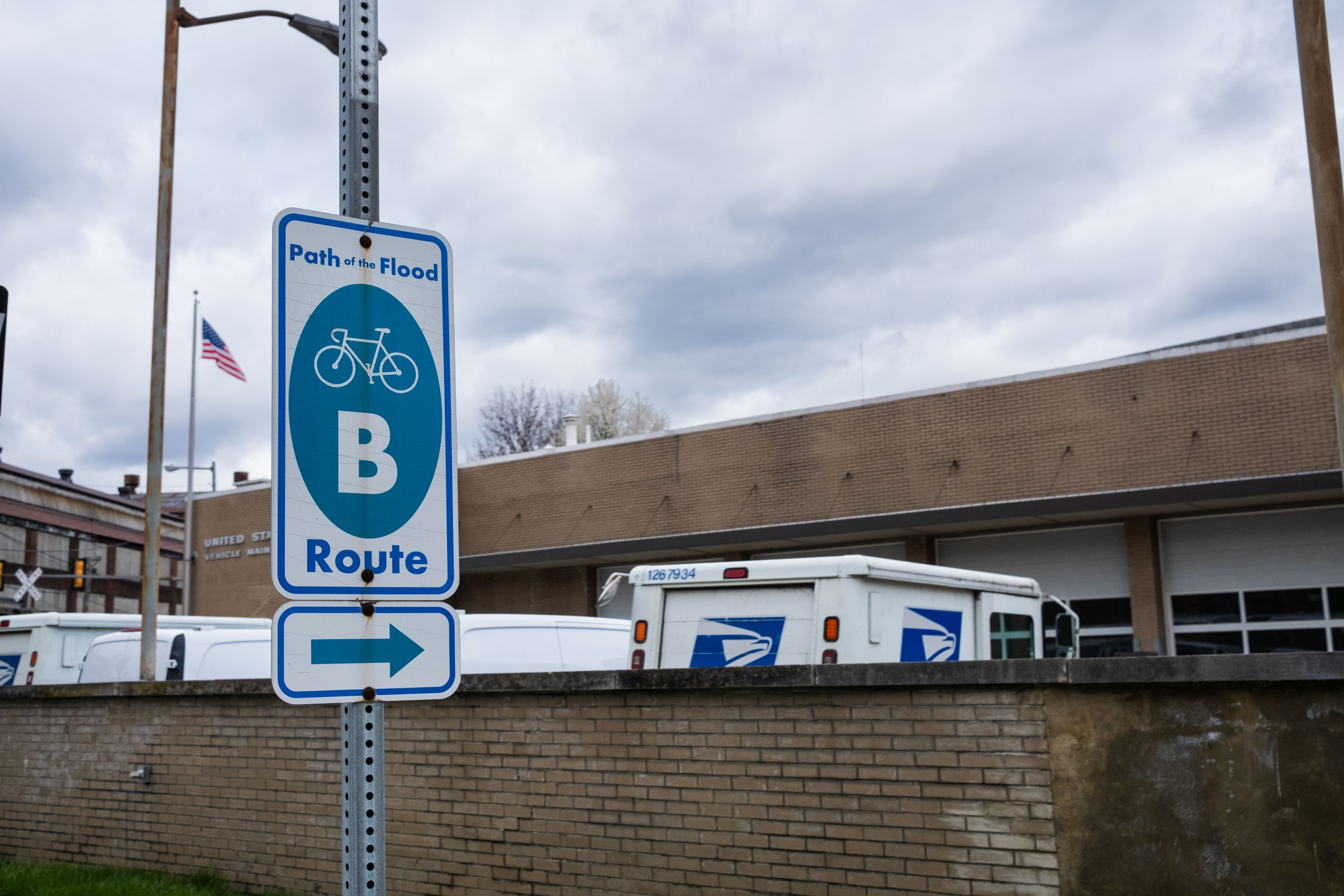 Path of the Flood Bike Path
Path of the Flood Bike Path
We end up at Famous Coney Island Lunch, a Johnstown staple established in 1916 for a lunch of initially questionable, but still delicious hot dogs. Amanda and I constantly try to make the memory of Anthony Bourdain proud and eat at the local hole in the wall wherever we go, and this place is no exception. We are also both on the opposite end of reading Raw Dog by Jamie Loftus so random small town hot dogs fit the theme on our own road trip. We both opt for the classic Coney Island Lunch: regular dogs with mustard and an absolute shit-ton of onion, too much for me. I scrape off about half of the pile onto the white paper plate while Amanda accepts her oniony fate.
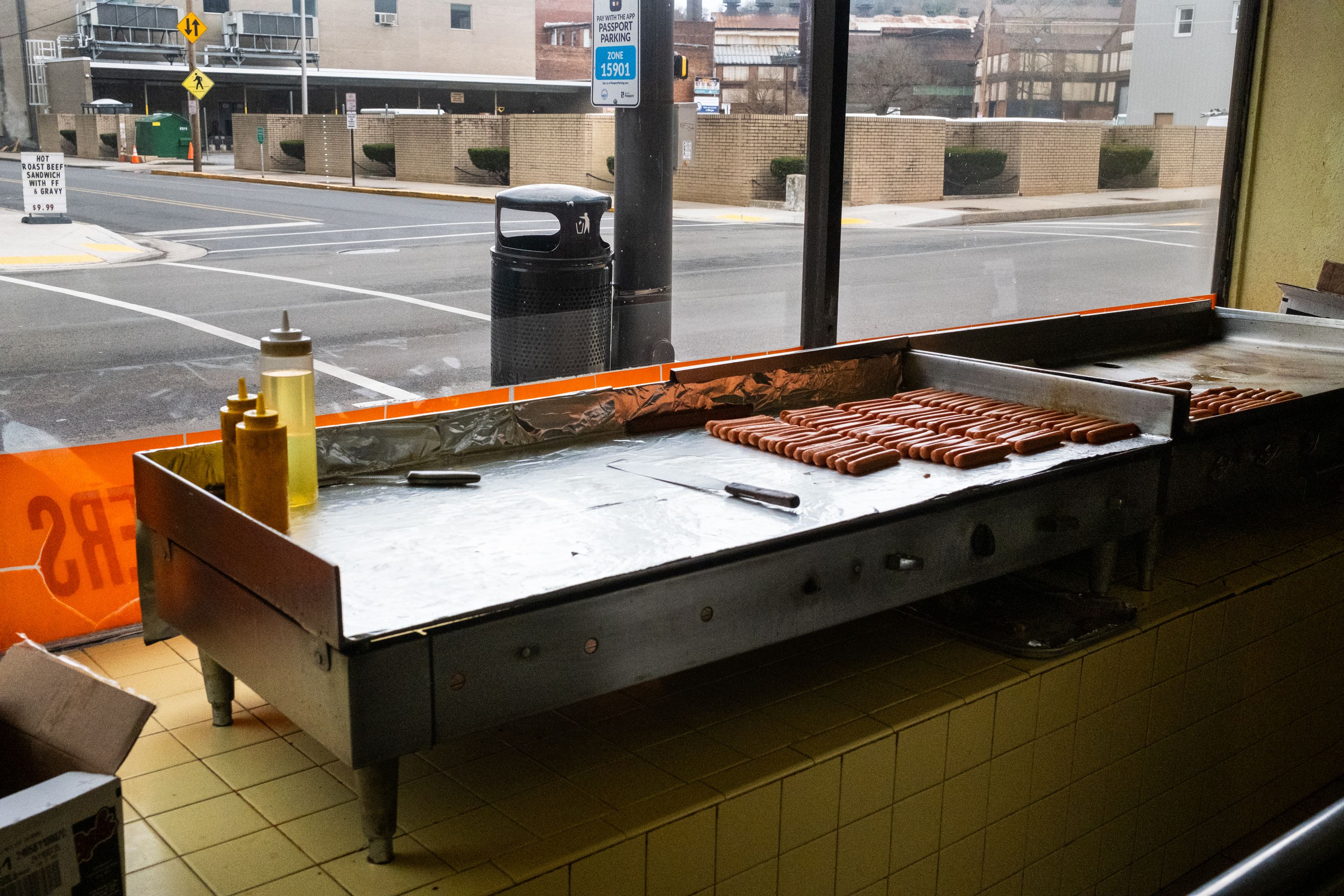
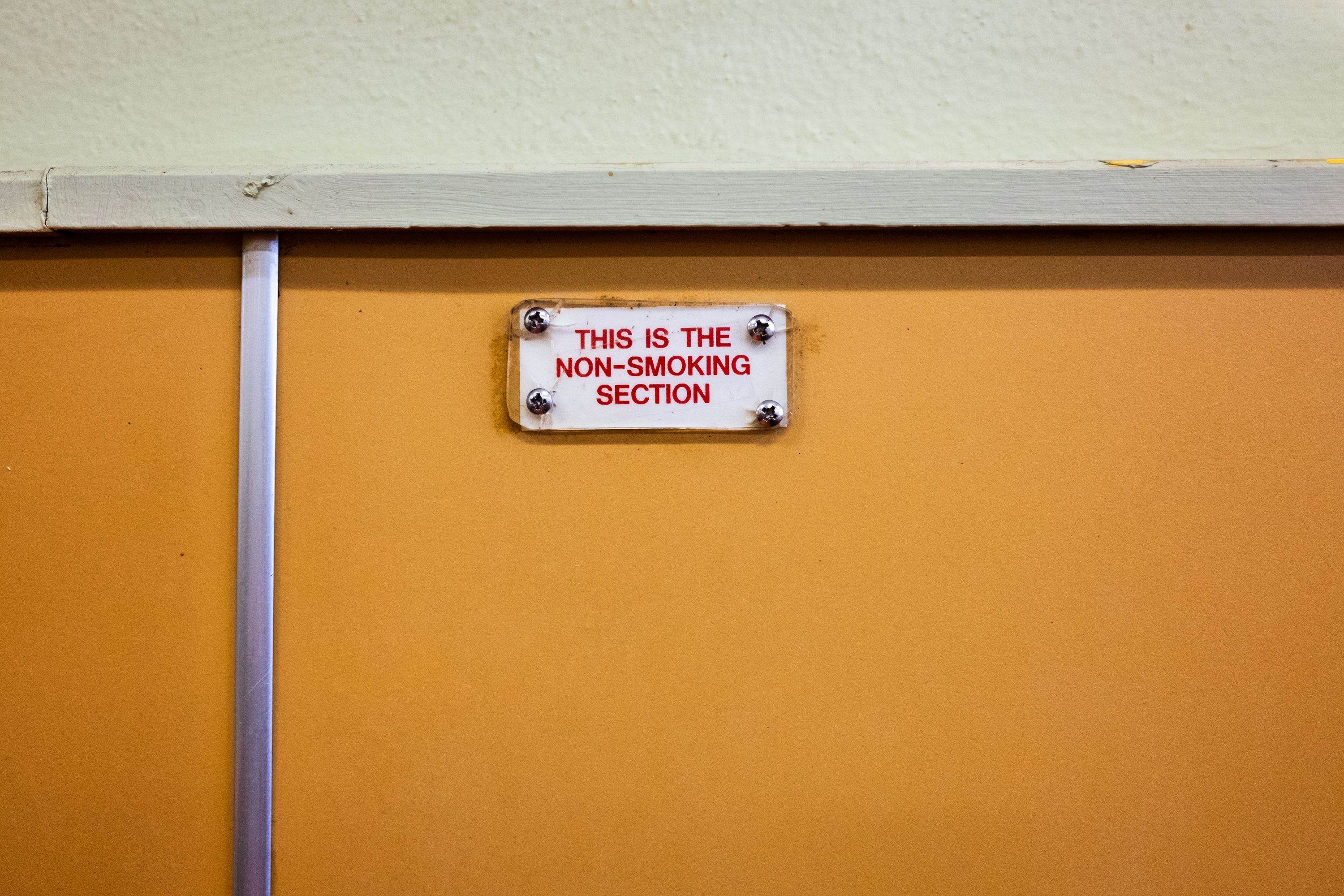


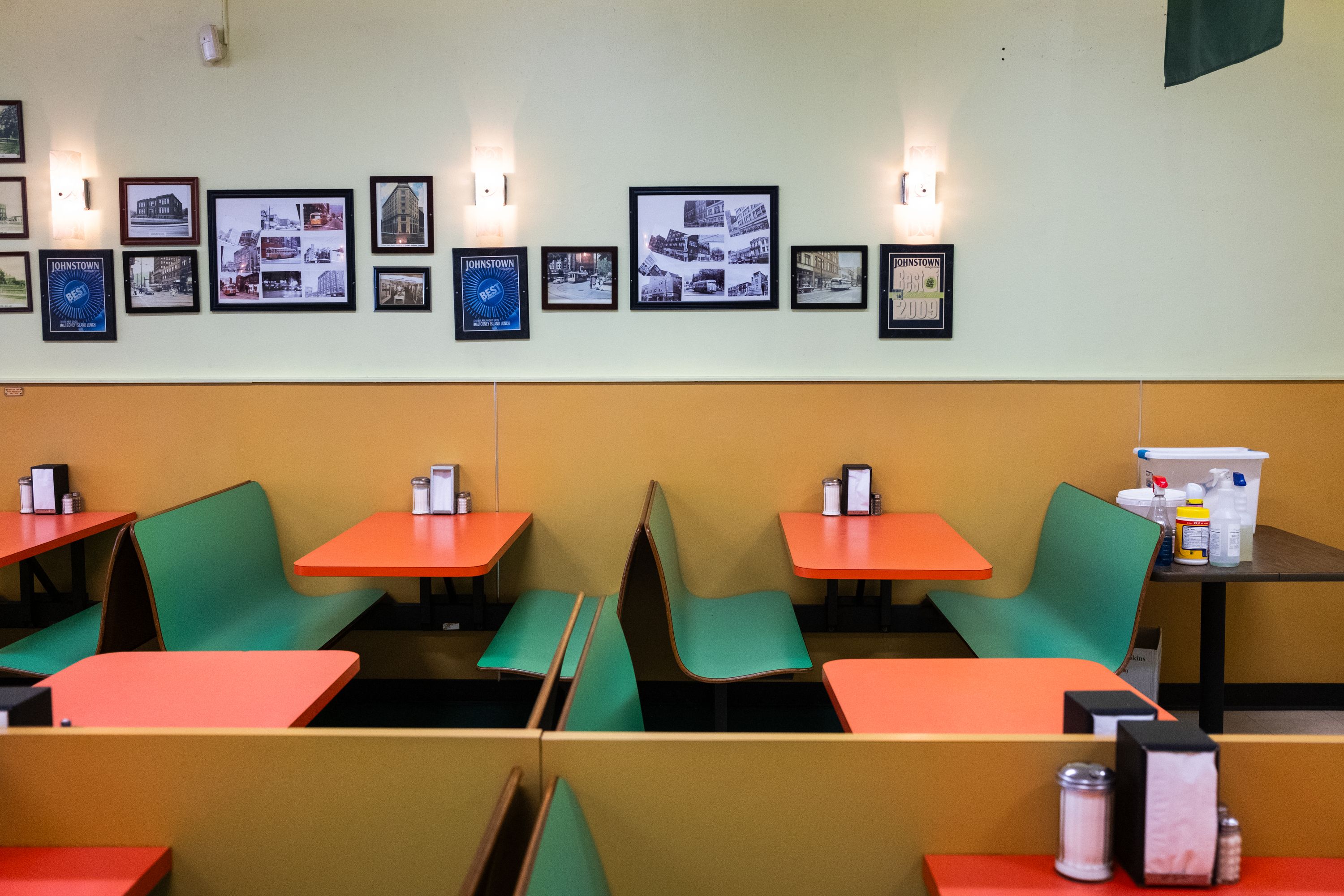
We get back to our car after spending too much time here and set the GPS to the Punxsutawney Public Library to visit Punxsutawney Phil. After a quick visit to my namesake, we will make it just in time to beat the setting sun to see the site of another catastrophe caused by Nature: Kinzua Bridge State Park. Originally built in 1882, Kinzua Bridge was; at the time of construction, the highest railway bridge in the world and remained standing as a tourist attraction until a 2003 tornado destroyed it. The towers have been left in place where they fell to show us the unrelenting force of nature. The height of the skywalk above the tree tops makes my knees weak as I walk to the edge. Laying in the grass like bent garden tools are the twisted metal towers still laying where they fell. Pictures don’t do the scale of the destruction justice. Luckily this time, no one was harmed during the bridges demise.
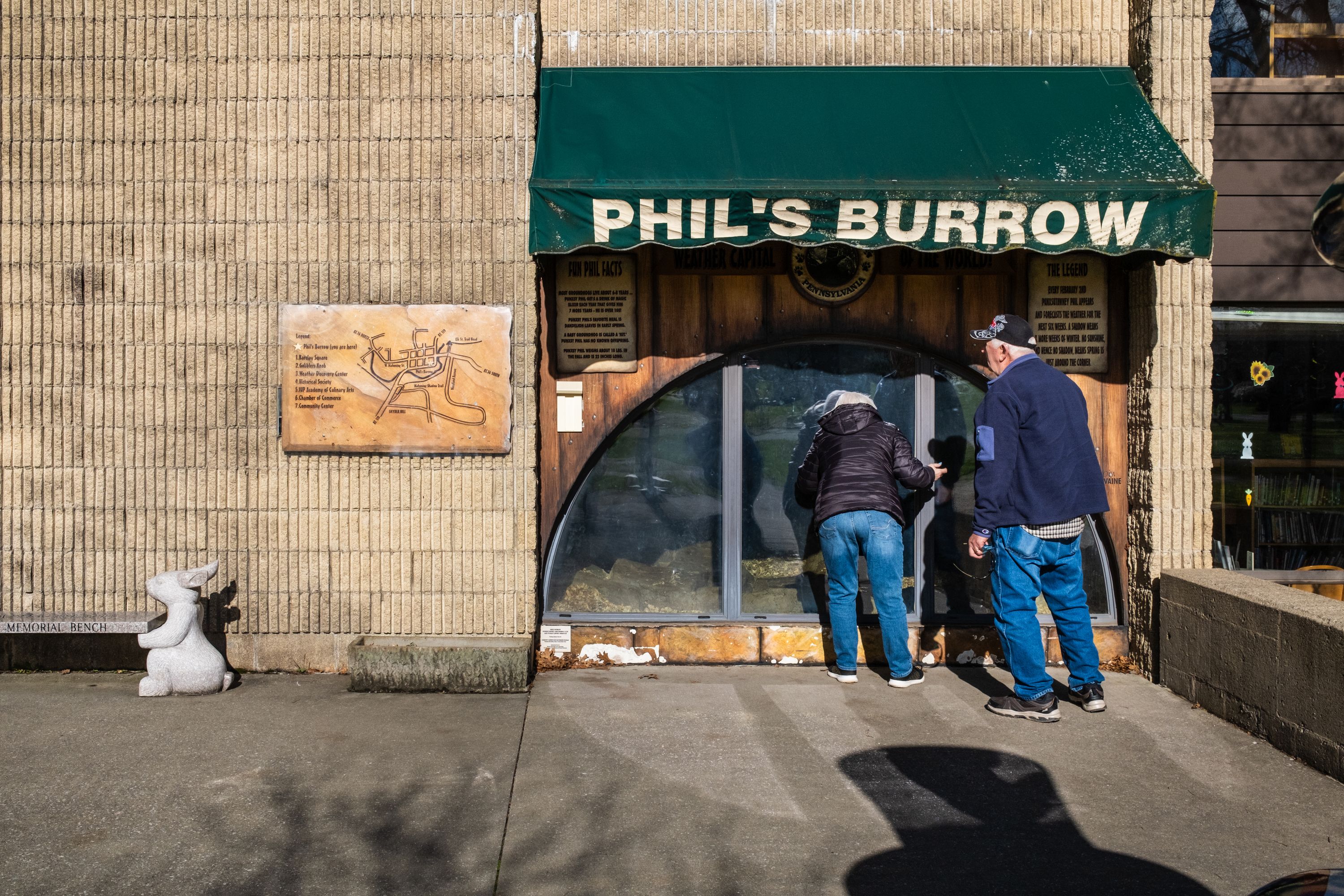 Punxsutawney Phil’s Burrow at the town Library in Punxsutawney
Punxsutawney Phil’s Burrow at the town Library in Punxsutawney  Kinzua Bridge Remains
Kinzua Bridge Remains
I find it hard to leave Johnstown. I’ve wanted to visit for literal decades, and we only spent a few hours. There is more to explore, more stories I haven’t heard, more threads of existence to pull on and examine. Johnstown isn’t the most beautiful place, the most fun place, or the most delicious place. It is simply a place with a tragic history that feels almost forgotten. A place that is attempting to embrace its collective trauma. A place where its citizens continue to weave their own tapestries of existence with the threads that remain.
 Beginnings Mural in Johnstown
Beginnings Mural in Johnstown
